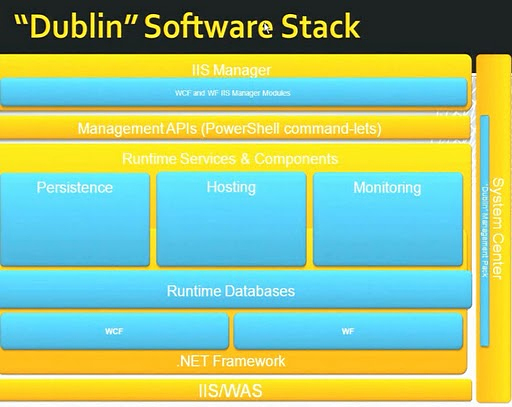Sponsored: Microsoft Visual Studio 2010 for Serious Web-Based Apps
Microsoft Visual Studio 2010 includes a range of new and improved features to make application programming and implementation faster and easier.
AppFabric Application Server
One of the first applications for the .Net Framework enhancements is with Microsoft's own Windows Application Server formerly called Dublin. Microsoft has been expanding and enhancing its app server that is built on top of Internet Information Services (IIS), Application Server Pages (ASP.Net), and other programming interfaces and languages.
As Web Services become more prevalent and are adopted in more IT shops, there is a need to better manage mixed applications that have some but not all hosted Web components, and that is where Microsoft's Application Server comes into play. Programmers need servers that can scale and mix and match components from a variety of sources and keep track of complex workflows and data transactions. You also want to be able to mix hosted and internal Web servers easily, or switch from one to another as your demands and needs change. These are all things that Microsoft is working on with this set of services.
The product is now officially called AppFabric and the current ship date is this fall. Eventually, it will be included as part of the basic Windows Server package but for now it is available as a beta 2 version. It is installed as part of Microsoft's Web Platform Installer.
As you can see from this diagram, the AppFabric relies on more than a dozen different Microsoft technologies, protocols, and services. It is all managed in the IIS manager, and includes both the Windows Communications Foundation (WCF) and Workflow Foundation (WF) programming interfaces. AppFabric provides better administrative tools to host and manage these services. There are also a variety of monitoring tools and controls that are geared towards building more scalable Web applications. You can add checkpoints and persistent states in your Web apps to make them more functional and more easy to debug when they encounter errors. You can manage workflows better and have more control over the data flows that get passed between different Web services, as well as better diagnostic tools too. The new software makes it easier to set up workflows by just dragging and dropping elements inside the programming desktop surface. There is more complete information about the beta 2 features here on MSDN.
(Click the image below and then click again to see the full size image.)
There are many layers of Microsoft technologies in the company’s AppFabric.
AppFabric has four major components, as you can see from the screenshot below that is taken from an IIS manager with a new top row of control panels for the AppFabric features:
Get Tom's Hardware's best news and in-depth reviews, straight to your inbox.
(Click the image below and then click again to enlarge the image.)
AppFabric installs several control panels in the IIS manager.
- Endpoints
- Event collector
- Monitoring dashboard
- Persistence database structures
- Program-specific services that have been created in the application
All of this functionality can be accessed through PowerShell commandlets as well as the desktop user interfaces in Visual Studio and IIS Management consoles.
To get a feel for what is possible with AppFabric, check out two of Stephen Thomas' videos where he demos a sample travel agency that hosts their services online and continues here at this link. Both give you an idea of the new ways to build and test Web-facing applications with these tools.
One of the first products to implement these tools is Microsoft's own Dynamics Web services, which should come as no surprise. The Dynamics AX and CRM products will leverage these technologies and enable them to scale upwards as their loads increase. Others who have announced products using these technologies include Dataract Pty. Ltd., Eclipsys Corp., Epicor Software Corp., RedPrairie Corp. and Telerik Inc., and software infrastructure providers, including AmberPoint SOA Management, SOA Software Inc., Frends Technology and Global360 Inc.
David Strom is the former editor-in-chief at Tom's Hardware and the founding editor-in-chief of Network Computing magazine. He has written thousands of articles for dozens of technical publications and websites, and written two books on computer networking.

